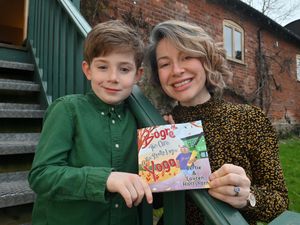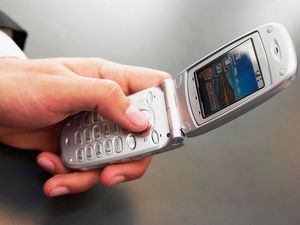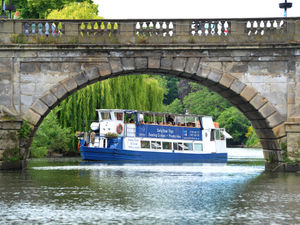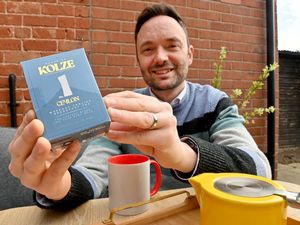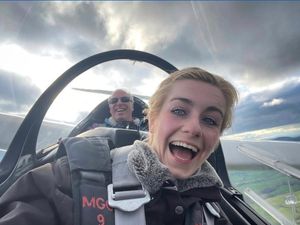Looking back at the star-studded life of Wolverhampton’s Club Lafayette
It’s the swinging 60s and the UK’s wildest venue is Wolverhampton’s Club Lafayette hosting Stevie Wonder, The Sex Pistols and Led Zeppelin. . .

For a time, it was the hippest club in Britain. Club Lafayette welcomed the biggest stars in rock‘n’roll to Wolverhampton. Stevie Wonder would drop in for a drink – then end up playing soul on the Laff’s tiny stage.
The Sex Pistols would tear the place up during the punk invasion, while The Who’s mercurial drummer Keith Moon would dangle from the balcony, risking life and limb in pursuance of a good time.
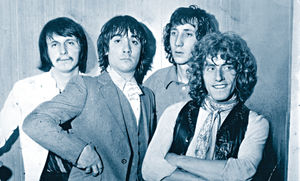
Black Country rock legends Led Zeppelin agreed to play the place for £75 quid – and ended up walking off with a grand.
And if you judge a person by the company he keeps, the Laff’s directors were hanging out with such A-listers as Tina Turner, Moody Blues, David Bowie, Elton John and Queen.
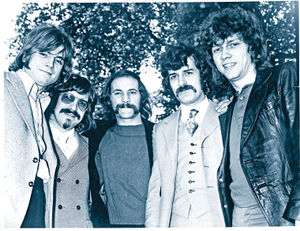
The Laff didn’t just give a bunch of beatniks and rockers the time of their lives in the 1960s and 70s.
It also altered the landscape of the Black Country on a permanent basis. Without the Laff, there wouldn’t have been the brilliant nights at Wolverhampton Civic Hall that have been a fixture of the city since the 1980s.
And there probably wouldn’t have been two of the region’s other seminal clubs – JB’s, at Dudley, which was created by former speedway rider Sam Jukes’ and hosted Dire Straits, U2 and The Stone Roses among others; and Mike Hamblett’s Robin 2, which is known as the Marquee of the Midlands and has welcomed Joe Bonamassa, Steven Seagal and the world’s best rock and blues artists.
“The Laff was unique,” says former director Tony Perry, the father of TV presenter Suzi and the one-time manager of Glenn Hughes’ band Trapeze.
“It put Wolverhampton on the map. Outside London, there was nowhere like it, not in Manchester or Liverpool, Birmingham or Glasgow. The Laff was a one-off.”
This autumn sees the 50th anniversary of the opening of the Club Lafayette in Thornley Street, Wolverhampton.
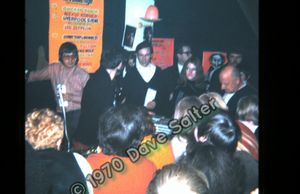
Its aim was to promote live music featuring both bands that were known nationally in addition to local groups.
The venue was designed and built by the Laff’s directors, with a certain amount of outside help.
It was owned by Astra Agency, which was based on the top floor of the Criterion Hotel in Lichfield Street, Wolverhampton, and was probably the biggest booking agency in the UK outside of London and Manchester.
The club’s dealings with Wolverhampton council were led by its chairman, Stan Fielding, who secured a music licence from Monday through Saturday until 2am, which was quite adventurous at the time.
There were seven Astra directors. Four have died, Len Rowe, Stan and Peter Fielding, and Maurice Jones. Three remain, Alan Clayton, George Maddocks and Tony Perry.
The club played host to numerous artistes over the years; some of whom became world famous.

The roll call included Led Zeppelin, Fleetwood Mac, BB King, Status Quo, Scott Walker, Sex Pistols and more.
However, the Laff also became popular with musicians on a social basis.
Robert Plant and John Bonham became visitors, with Bonzo’s wife Pat holding a birthday party there.
Rod Argent booked the club for his stag party. John Lodge and Justin Hayward celebrated their sell-out concert at the Civic Hall in 1975 as the ‘Bluejays’ with an after-show party, not to mention former Star feature writer John Ogden shepherding an array of Motown artistes from the Gaumont Cinema to the Laff, which resulted in Stevie Wonder performing on stage.
The club also became a popular haunt for some of the Wolves players during the 1970s with both John Richards and Phil Parkes meeting their wives there. The stories go on.
Tony Perry says the Laff was all about letting the good times roll in Wolverhampton.
“There was a property called the Blue Flame Ballrooms that was only used once a month for the equivalent of a car boot sale. We were enthusiastic about it and wanted to turn it into a club. We wanted to put bands on seven nights a week and promote live music. We were doing a lot of gigs around town at the time. I was doing the Park Hall Hotel and the two other venues, you see.
“We’d be filling our venues, the pub or hotel, and making no money. There was only the brewery making money from those shows.
"But we wanted to give new bands a chance so we opened it up in the autumn of 1968.
"I would say we’d do about 750 at the Laff. We wanted to make money but even more important was our moral obligation to Wolverhampton. We wanted the city to have a good time.”
The city responded in spades.
Rock legends such as Robert Plant and John Bonham became regulars.
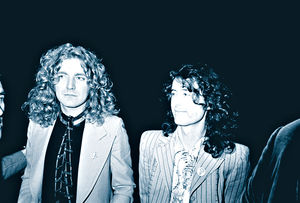
Bonzo, in particular, became one of the lads. There was never any star-gazing with the Led Zeppelin drummer. He’d enjoy a drink and tell his pals stories about life on the road with the world’s biggest rock band.
The Laff’s links have endured and in 1999, some years after the Laff had closed, Tony took a call from Robert’s former sound engineer, a guy called Roy Williams.
He had a message that Robert wanted to do some dates and get back to basics, stripping it all back as though he were back at the beginning.
So Tony booked Stourbridge Town Hall and Queen Mary Ballroom, printed and numbered the tickets himself and sold them from his home.
“Zeppelin were massive, but they were also brilliant.
“When we booked them, we paid them 75 quid plus a percentage of the takings on the door. So many people squeezed in that night that they came away with £1,000. Needless to say we didn’t get a second booking.
“There was never any cr*p with those boys. They’d walk through the crowd to get to the stage and then afterwards I’d see Planty down the Molineux.”
Fun times.
The Laff’s directors worked hard at it. And although the club initially struggled during the tough times of 1968 and 1969, it eventually took off.
During the 1970s, when disco ruled, the Laff kept it real and started booking punk rockers.
They hosted Sex Pistols twice – booking them in code as The Spots; which meant The Sex Pistols On . . . something or other.
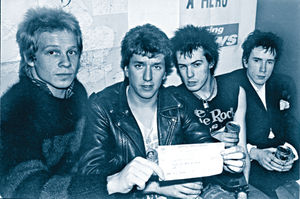
Another huge name was Scott Walker, the baroque pop star went solo after enjoying such hits with The Walker Brothers as Make It Easy on Yourself and The Sun Ain’t Gonna Shine (Anymore). His gig didn’t go to plan.
“We had a relationship with Scott’s management so we booked him. We didn’t have many in that night but he was brilliant.
“Now, before I tell you what happened next, I want to tell you what the Laff was like. Bands would park outside in the street, open their van, then go straight through the dressing room door onto the stage to set up.
“Scott did that when he played. He unloaded, went through the dressing room and then did his first set, which was 35 minutes. He went back in his dressing room afterwards and we calmly waited for the second half. After half an hour, he started getting a bit twitchy because he was having too long for his break. So we went to see him and he’d gone. He’d just left. We didn’t want to pay him but his management had a bit of a reputation. His guy said: ‘You can do what you like to me but I’m not leaving without the full money’.” He was paid off and Scott never returned.
The Star’s former entertainment correspondent John Ogden was responsible for one of the Laff’s most seminal moments.
Oggers had been at a Motown show on behalf of the newspaper and after the show was hanging out with the bands.
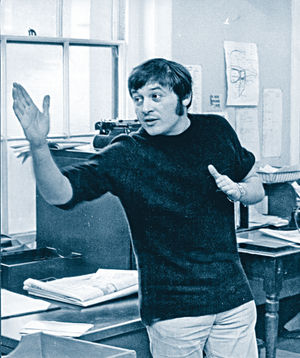
They asked him if there was anywhere still open late at night to get a drink and a bite to eat.
Oggers told them to follow him and he drove straight to the Laff.
Stevie walked in and, because of his blindness, the club directors told him their club was incredibly plush and luxurious. The Motown star lapped it up and agreed to get on stage, playing an impromptu set. Tony says:
“It was incredible. People would have been standing at the bar having a pint and a beef sandwich and then up pops Stevie Wonder. Amazing scenes.
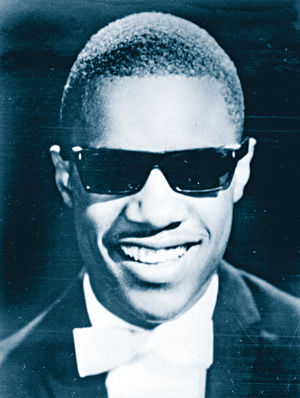
”
The Laff was a product of its time. Clubbers had long hair and flares for the most part – not forgetting the broadest of Black Country accents. Not that everyone was down with the fans’ fashion sense. Club chairman Stan Fielding, for one, wanted to smarten the place up.
Tony says: “Stan was a lovely bloke but he got fed up of all the long hair. He decided that we wouldn’t have posters with any long-haired louts on them and we agreed. But then we booked Fleetwood Mac, who were going to be massive. The only way to get the gig was to hide all the posters from Stan, which is what we did.”
The story of the Laff, however, isn’t simply the story of shows at that innovative club. It’s also the story of popular culture in Wolverhampton. The Laff’s directors booked artists from around the world and when the Laff wasn’t big enough to cater for them, they’d send performers to Wolverhampton’s Civic.
“We did Elton John, David Bowie, Queen, AC/DC, Deep Purple . . . You name it.

“We had Yes on and varied it by adding people such as Billy Connolly and a fair few American acts.
“We’d still be running stuff at the Laff, even getting gigs on Monday nights. If we couldn’t get a band for the start of the week we’d phone up Status Quo or John Mayall’s Bluesbreakers and pay them £100.
“David Bowie was only on £100 when he played Wolverhampton with us. But when he came his band didn’t turn up, so we knocked him down to £60. It was a magical era. The whole town was alive with live music.”
Black Country legends Slade were a part of the scene. Tony had known them as their former incarnation, The In Betweens, and he’d even sold his van to flamboyant bassist Dave Hill. When Slade enjoyed a meteoric rise, they’d still return to the Laff once they were off the road.
The good times continued throughout the 1970s and into the early 80s, when the venue was sold.
In 1988, the Civic appointed a new manager, Mark Blackstock, and The Laff’s directors continued to help. “Mark put the word round that he wanted people to put on more shows. So we had Blondie and all sorts. Mark took on the mantle from the Laff. He kept things live for a long, long time.”
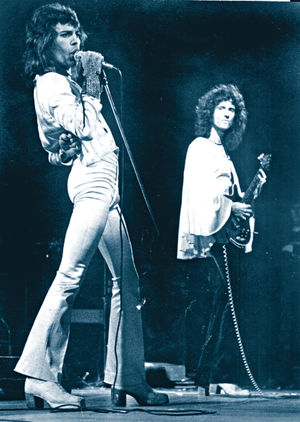
Tony says the team were inspired by their Wolverhampton roots. “I’m Wolverhampton born and bred. We were proud of bringing these acts in and as daft as it sounds, we were ahead of Birmingham and Manchester and places like that and took a pride in that. There were gambling clubs or social clubs but nothing like the Laff.”
There are no plans for a 50th anniversary get-together, though Tony wants to remind people what the Laff achieved. “It would just be nice for the people in Wolverhampton to know that we genuinely felt we were a part of bringing live music to the Midlands. I don’t want this to be about me – I’m only telling you the story because some of the others are no longer here – I just want it to reflect on the club.
“They were amazing times. You’d get people like Keith Moon coming back because the Laff was the only place you could get a steak and chips until 2am after a gig somewhere else.
“Keith was incredible. He was at a Sludge Lees comedy show one night and was sitting on the balcony. Suddenly, they started to lower Keith off the balcony into the audience below. Sludge looked up and saw what was happening. Quick as a flash, he said: ‘Oh, I see the Moon is out tonight.”

